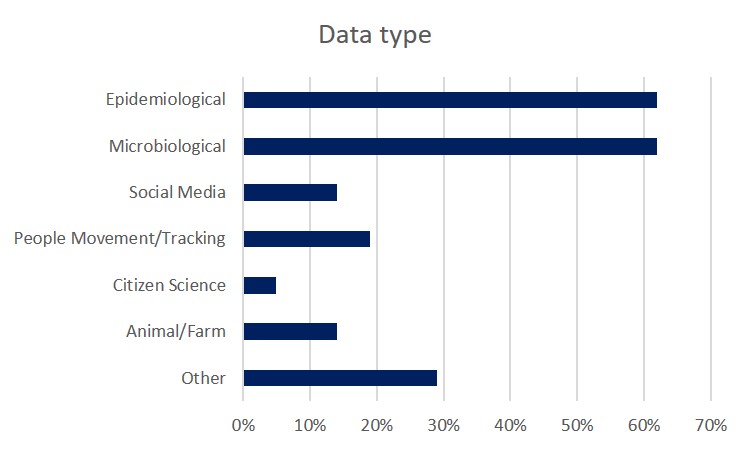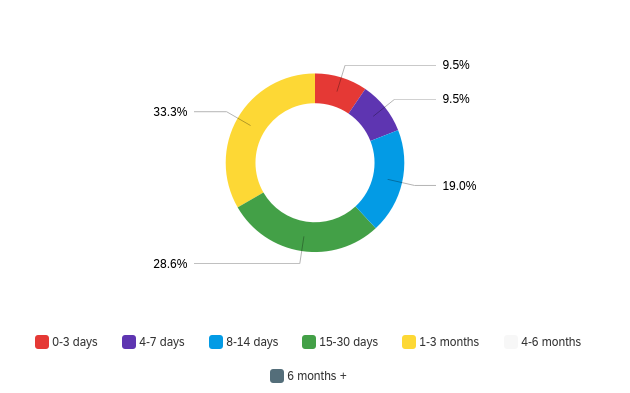The purpose of the questionnaire was to assess the tools that have been applied to SARS CoV-2 from within the VEO consortium and to identify where improvements can be made in preparation for the next Disease X. The questionnaire was completed by 13 out of 20 VEO partner institutes in August/ September 2021.
Data
A wide range of tools/activities/techniques were developed and covered a number of disciplines, particularly bioinformatics analyses, sequencing and epidemiological/ statistical analyses. A number of data types were exploited during development of the tools (Figure 1).

Figure 1. Data type used in the development of the tool and the percentage of respondents who used each data type. Epidemiological, microbiological and animal/farm data were primarily from government and academic sources with an even split between open and restricted access sources. People movement/tracking data were from private and government sources and social media and Citizen Science data from open access sources.
The main data repositories used in development of the tools were GitHub and GISAID.
Development/ Deployment
42% of the tools were developed prior to the SARS-CoV-2 pandemic and adapted in response to the pandemic, and 30% were developed initially in response to the pandemic. The main purposes of the tools were for research and outbreak control activities. 47.6% of tools were developed within a 30-day timeframe and 73.7% of tools were deployed within a 30-day timeframe.
Disease X scenario
100% of the tools could be deployed for Disease X with adaptation with 66.7% of tools able to be deployed within a 30-day timeframe (Figure 2).

Figure 2. Speed at which the tool/technique/activity could be deployed for Disease X. All respondents could deploy their tool for Disease X within 3 months.
Impact
In terms of impact on the body of knowledge of SARS-CoV-2 in research, 76% of tools were considered high impact. In terms of potential impact on the control of SARS-CoV-2 in a future pandemic, 86% of tools were considered high impact.
Lessons Learnt/ Barriers
The main lessons learnt and issues recorded were supply/resource issues e.g. of reagents, the importance of keeping capabilities up to date for rapid response to future pandemics and importance of collaboration. People also had issues with sharing of and access to data within and between institutes. Over a third of respondents also experienced IT system, data format or data quality barriers.
Next steps
The results from this survey will be used within VEO to inform activity around contingency planning for the next Disease X. The results have also been shared with the Horizon Europe project BeYond COVID (BY-COVID), which aims to make infectious disease data available for all.